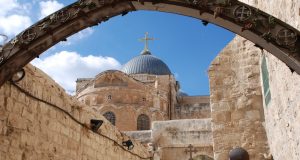PARISHIONERS SHOULD take steps to reduce the risk of fire at their church ahead of the Easter school holidays, the Risk Services Manager at Ansvar Insurance, Phill Salter, announced today.
Mr Salter said that churches were at some risk of fire during times when they were vacant.
“Churches and church halls are frequently unoccupied, but the school holidays can be an even quieter time as church clubs and social activities enter a recess period,” Mr Salter said.
“Worship centres can be easy targets for arsonists because they are often situated some distance from other buildings and are, in some cases, reasonably simple to access.
“Easter is a very special time for churches, and we don’t want this significant religious period spoilt by a blaze at a worship centre.”
Parish leaders can reduce the risk of church arson if they:
• Erect security lighting inside and outside the church building;
• Lock away all flammable liquids in a metal cabinet;
• Establish a key register and limit the number of people who have access to the building;
• Make it more difficult for unauthorised people to access the roof area of the church; and
• Mount a monitored security and fire detection system throughout the church property.
Mr Salter said churches could also minimise the likelihood of an unintentional property fire.
“When people think of fire and faith organisations, they often picture a lit candle that has fallen from a table during a service, but there are many other ways that church property can be engulfed by flames,” he said.
“Church halls are often large spaces and take a great deal of effort to heat, and it’s vital that parishioners ensure their heating system does not pose a fire hazard.
“Churches should avoid all forms of portable heaters and opt for a permanent heating fixture that is installed and maintained by qualified professionals.
“Regular attendees and visitors to the church property should be asked to keep any flammable items at least one metre from the heating system.”
Church fires can also be caused by cooking in on-site kitchens, since these rooms often accommodate a mixture of gas flames, electrical outlets, hot oil, and gas and electrical appliances.
Parish leaders should install a smoke detector in, or near, the church kitchen, and consider whether that device needs to be linked to a monitored alarm that alerts the fire brigade to a blaze, especially in cases where no-one is at the property.
Church kitchens should also accommodate a fire extinguisher that is recommended by local fire authorities, as well as a fire blanket, to quickly stop small flames from frying pans and woks.
Mr Salter said fire inside churches could also be started by faulty electrics, and repair work that involves welding and angle grinding.
“It’s vital that congregations consider the risk of fire on a regular basis, especially given the affection that so many parishioners share for their worship space,” Mr Salter said.
“Many churches are heritage buildings and often contain very rare and hard-to-replace materials, including stained glass windows.
“While church buildings may be rebuilt, a fire-damaged worship centre can cause great stress to congregations, and disrupt their regular activities for many months.”
Ansvar Insurance protects more than 9000 places of worship, and recently published the Risk Management Manual for Faith Organisations, a comprehensive document with information, forms and templates to help churches to manage their risk and liability.
Faith groups can obtain a free copy of the manual, which includes a section on fire prevention by clicking here
 JourneyOnline
JourneyOnline






